May 20, 2024
“Can-Do” Drives Innovation
*Special thank you to Open House Optics for providing the photos for this blog!
Over the years, I have learned never say “I can’t.” Indeed, I hate it when I hear that. I may be skeptical, but I will at least give it a try.
Even with my never say “can’t” philosophy, I’m not sure what my answer would be if someone asked me to design a house with a 10’ wide building envelope. Last week, I learned that someone else must have refused to say “You can’t make that work”. This quote from the Business Insider article sums it up perfectly:
“And to be honest, the builder almost built this out of spite just because of that fact. ‘Oh, you don’t think we can build, hold my beer,'” Wetherhold said.
I think I would get along with that guy.
The Jacksonville Beach house in question, as reported by Business Insider and picked up by the New York Post, was on a narrow but long lot: 25’ wide by 138’ deep. Because it was in an already developed neighborhood, the setback needed to be 7.5’ on each side – unlike the 5’ side yard setbacks we see in new subdivisions. The total length of the house is 80′ while still leaving room for a backyard and driveway.
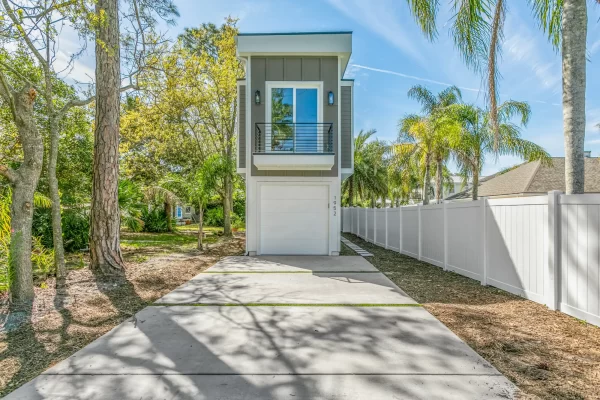
Open House Optics
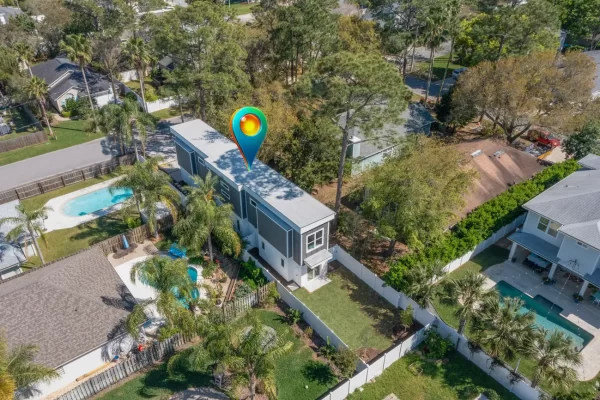
Open House Optics
Ah – but there was a catch. In this jurisdiction, setbacks are measured to the foundation and “overhangs” are allowed into the setback. So with 2’ deep cantilevers on both sides, the house magically grew to a whopping 14’ wide. It was the combination of cantilevers, cleaver space planning and ample natural light that made this house (at least in the pictures) livable.
Here are some key tips and tricks that made it work.
- Entry door on the side with a cantilever above creating the cover for the door and stoop. Entering behind the one car garage puts you close to the middle of the home.
- The stairs are in the middle of the house, allowing a bedroom on the front and the rear of the home.
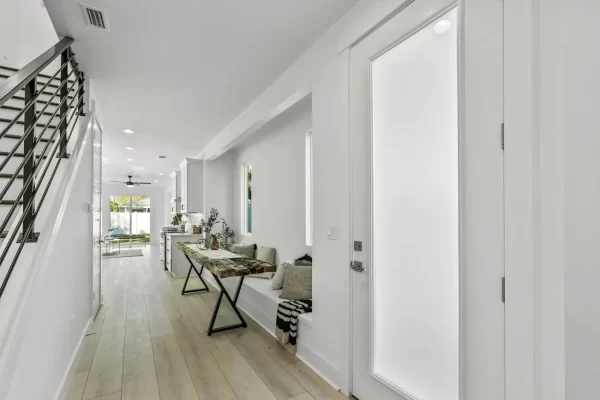
Open House Optics
- The stairs have an open handrail visually expanding the central second floor hall to the full width on the home – plus the window shelf that was cantilevered out 2’.
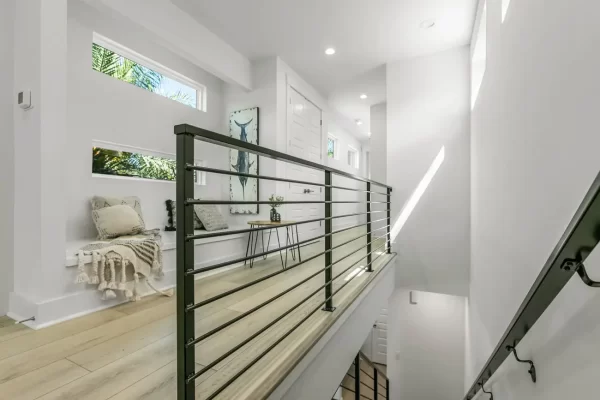
Open House Optics
- Cantilevers are used extensively to not only expand the space visually, but also as “non walkable” platforms at 20” AFF space expanders. These expanders include:
- Bench seating for the dining table (which is in the foyer).
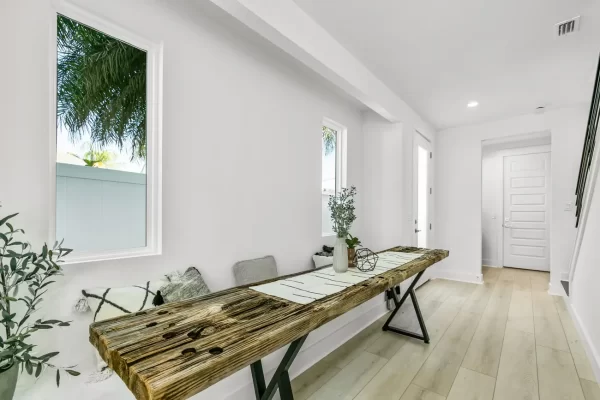
Open House Optics
- Niche for the TV and seating in the living room.
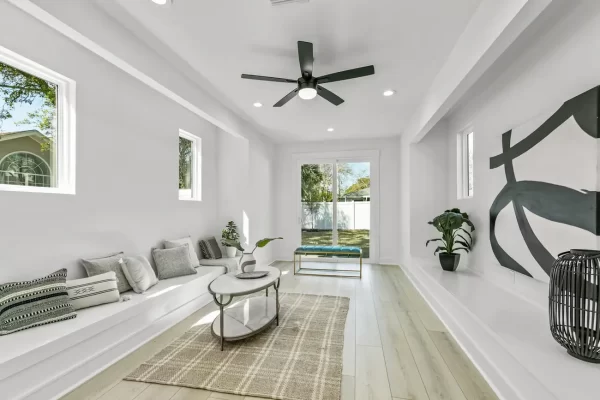
Open House Optics
- Platform for the beds in both bedrooms.
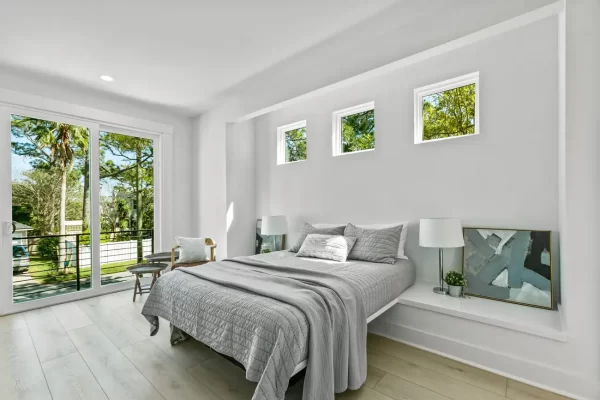
Open House Optics
- Bench seating for the dining table (which is in the foyer).
- The kitchen is a nicely appointed walk-thru galley.
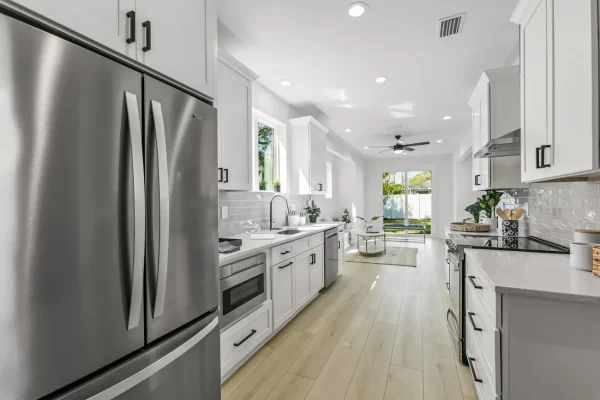
Open House Optics
- The HVAC unit partially on a non walkabout platform.
- The linen closet.
There are a few compromises that come with such a narrow footprint, of course:
- There is no island in the kitchen – there is just no room.
- No walk-in closets. Indeed, the closets are quite small.
The front elevation is dominated by the cantilevered balcony but as you look down the side of the home, the home resembles an RV with those clever slide-outs. Like an RV, this home is a perfect short-term rental or vacation home. Oh – did I mention it is walking distance to the beach?
Sometimes, it takes a “stubborn” mind to push the envelope and show what’s possible. Kudos to the builder for seeing it through. While this home is not for every buyer – it does offer some great design concepts and manages to fit into the established and desirable beach neighborhood in a small footprint. What do you think? Write to me at Housing Design Matters.
Categorized in: Uncategorized
This post was written by Housing Design Matters

